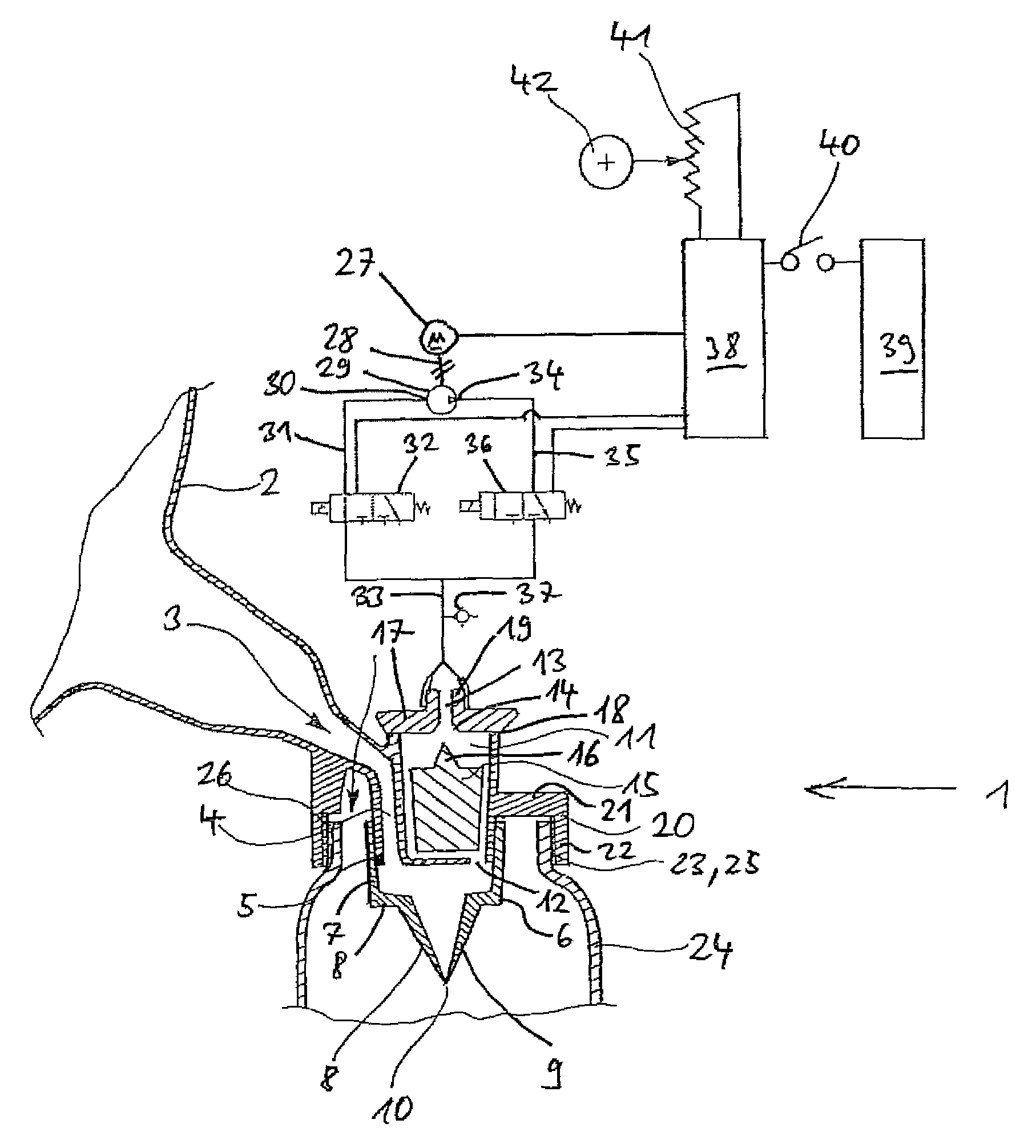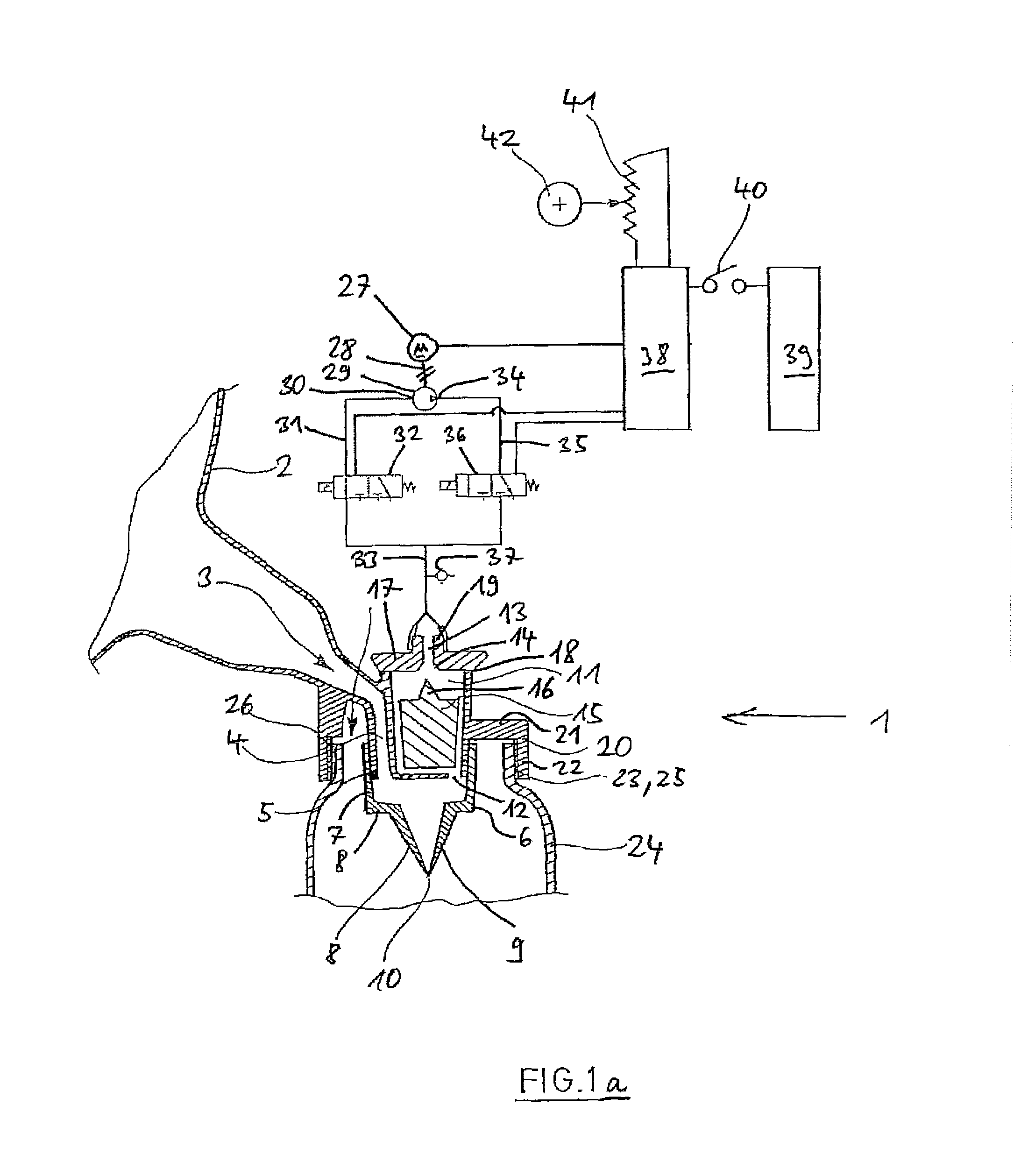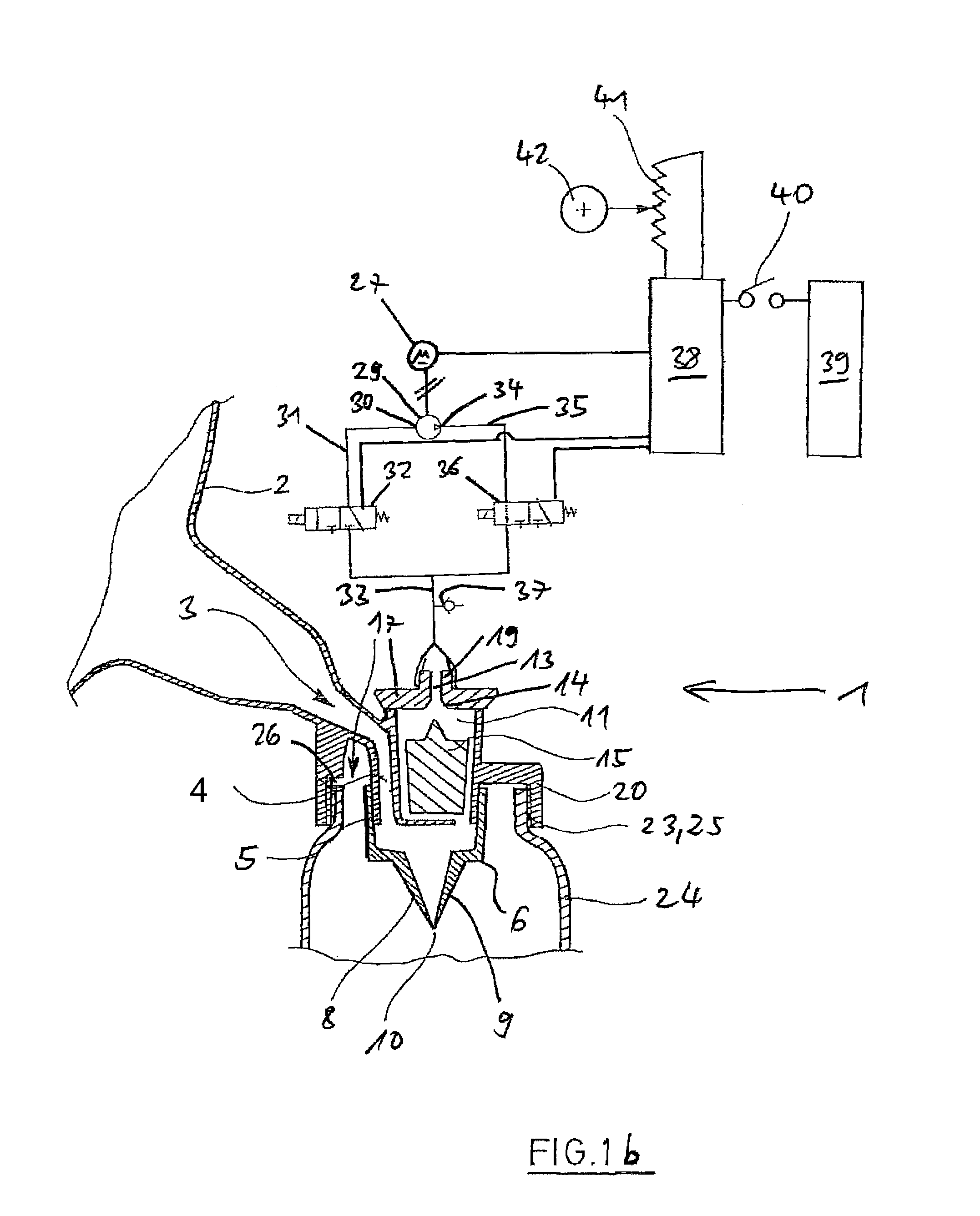Electric breast milk pump
a breast milk pump and electric technology, applied in the direction of milking pumps, suction devices, intravenous devices, etc., can solve the problems of limited flow in pressure compensation and milk gradually jamming above the outlet valve, and achieve the effect of compact construction and short tim
- Summary
- Abstract
- Description
- Claims
- Application Information
AI Technical Summary
Benefits of technology
Problems solved by technology
Method used
Image
Examples
Embodiment Construction
[0049]While this invention may be embodied in many different forms, there are described in detail herein a specific preferred embodiment of the invention. This description is an exemplification of the principles of the invention and is not intended to limit the invention to the particular embodiment illustrated.
[0050]According to FIGS. 1a and 1b, a breast milk pump 1 has a suction cup 2, which broadens towards the outside and has an opening 3 to a connection channel 4 at its inner end. At the lower end, the connection channel 4 merges into an outlet 5 in the form of a vertically directed pipe neck.
[0051]On the outlet 5 sits a discharge valve 6 in the form of a duckbill valve. The duckbill valve 6 is made of an elastic and inert material, for instance of silicone rubber or latex. At its upside, the duckbill valve 6 has a pipe-shaped portion 7, which has a valve bottom 8a at the downside, from which two flat legs 8, 9 project towards the downside. The duckbill valve 6 is clamped onto ...
PUM
 Login to View More
Login to View More Abstract
Description
Claims
Application Information
 Login to View More
Login to View More - R&D
- Intellectual Property
- Life Sciences
- Materials
- Tech Scout
- Unparalleled Data Quality
- Higher Quality Content
- 60% Fewer Hallucinations
Browse by: Latest US Patents, China's latest patents, Technical Efficacy Thesaurus, Application Domain, Technology Topic, Popular Technical Reports.
© 2025 PatSnap. All rights reserved.Legal|Privacy policy|Modern Slavery Act Transparency Statement|Sitemap|About US| Contact US: help@patsnap.com



